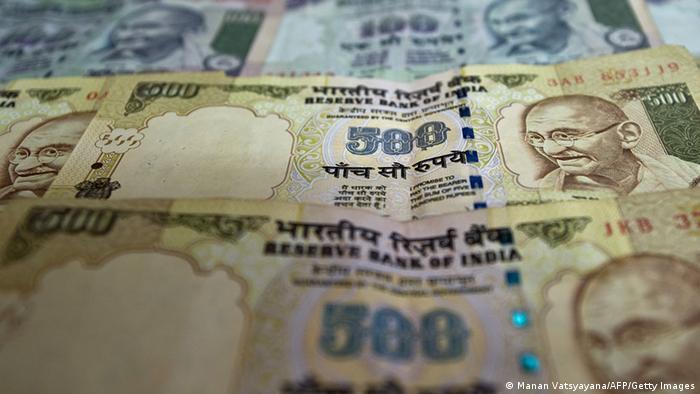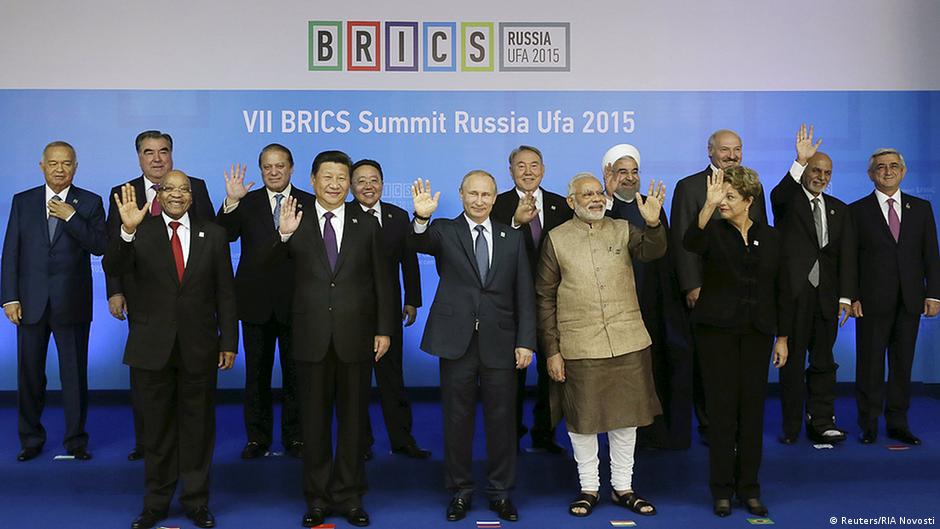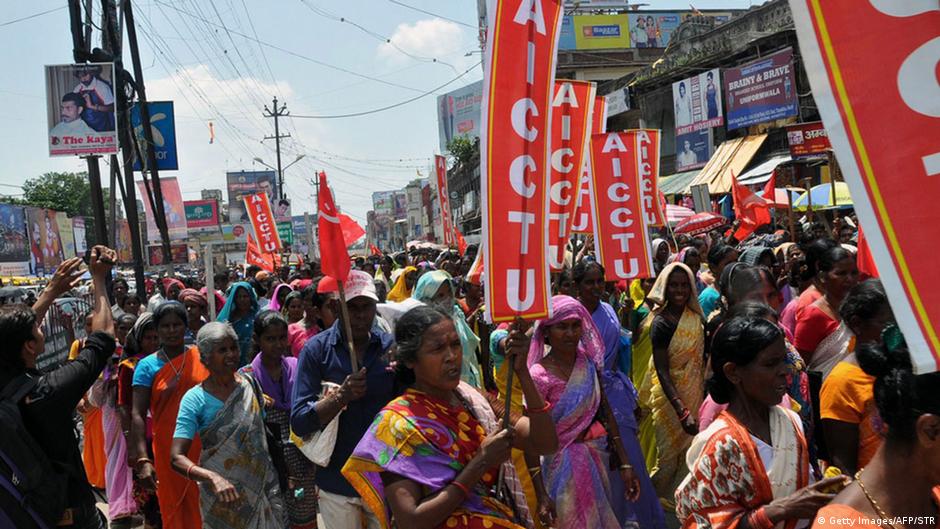China's economic slowdown - India's opportunity?
China's recent downturn has led to a reassessment of global economic growth, with analysts pointing to how India may benefit from the slowdown. But is the South Asian nation set to become the world's next growth engine?
Date 07.09.2015, Source
The Chinese 'normal' has now changed. It is no longer the nine percent, 10 percent, 11 percent growth rate. So the world needs other engines to carry the growth process. And in a slow-down environment in the world, an economy which can grow at eight to nine percent like India certainly has viable shoulders to provide the support to the global economy." These are the words of Indian Finance Minister Arun Jaitley, who recently spoke to the BBC on the impact of China's recent stock market plunge.
Although many economists argue that the panic about the state of China's economy is overblown, there have been a string of reports and comments suggesting that India could be ready to "take the baton of global growth" from China, as Deputy Finance Minister Jayant Sinha put it.
And there are strong arguments to support that claim. While both Brazil and Russia are in the midst of a recession, India's economy has been growing at impressive rates, with last week's release of GDP figures showing that India grew as fast as China last quarter (7.0 percent year-on-year).
And as Rajiv Biswas, Asia-Pacific Chief Economist at the analytics firm IHS, explains, India's growth has the potential to strengthen to a pace of eight percent to nine percent over the medium term. So with Chinese economic growth moderating - expected to be 6.5 percent in 2015 and 6.3 percent in 2016 - India is projected to become the fastest growing BRICS economy, with GDP growth forecast to be 7.6 percent in 2015 and 8.1 percent in 2016, according to IHS.
How does India benefit?
An important aspect is the fact that India's economy is far less vulnerable to a Chinese downturn than other Asian economies, as Shang-Jin Wei, chief economist at the Manila-based Asian Development Bank, told DW. "Because Indian firms are less integrated with companies in China and do not sell much to the world market, a Chinese slowdown has limited effect on India," Wei explained.
Analyst Oliver White agrees. In a recently released paper, the economist at UK-based Fathom Consulting, pointed out that India's exports accounted for a relatively small proportion of its GDP, at just over 20 percent.
Moreover, India boasts a fairly diversified export base, with its service sector accounting for nearly 50 percent of total exports, thus making the country far less reliant on merchandise trade than other Asian economies.
On top of that, the provision of information technology and business outsourcing services is also less likely to be affected by China's currency depreciation, said White.
Lower commodity prices
India also stands to profit from cheaper commodity prices which have dropped as a result of the Chinese slowdown. "Commodity prices will stay low for a longer period if China grows at five rather than eight percent. As an importer of minerals, oil, and other commodities, India will be able to buy at cheaper prices," explained Gary Hufbauer, an international trade expert at the Washington-based Peterson Institute for International Economics.
At the same time, lower commodity prices are helping India to keep its current account in check and also reduce input costs.
Another favorable aspect for India is that investors interested in developing markets have a narrowing set of options given the current economic troubles gripping most emerging market economies.
In this context, India stands out as a relatively bright spot given its stable macroeconomic conditions, renewed policy momentum, and a business-friendly government, as Milan Vaishnav, an expert on India's political economy at the Carnegie Endowment for International Peace, indicates.
"While India's domestic scenario is not without its difficulties, it is profiting from the hard times its peers are facing at present," Vaishnav told DW.
'Not the new China'
All of this goes to show how recent events in China have presented India with an opportunity to make its mark on the world economy. However, experts caution that India is not "the new China," and therefore unlikely to rival the East Asian giant's global economic impact - at least in the short run.
The vastly bigger size of China's economy means that it will continue to contribute far more than India's to global GDP growth even if it grows at a slower rate. Although the size of India's population is similar to that of China's, Chinese GDP at $10.3 trillion in 2014 is five times larger than India's, which was valued at around $2 trillion in 2014. Indian per capita GDP is therefore only a fraction of Chinese per capita GDP, which is reflected in much lower living standards and less favorable human development indicators than in China.
Shilan Shah, an India economist at UK-based Capital Economics, explains that even if China were to grow at only five percent per annum over the next three years, it would still contribute around 0.8-0.9 percentage points each year to global GDP growth.
"Assume, by contrast, that India does achieve seven percent average growth. In that case it would still contribute only 0.5 percentage-points to world GDP growth," said Shah. This is why analysts believe developments in China will continue to have much bigger knock-on effects in other areas, such as commodity prices and in emerging markets more generally, than developments in India.
A manufacturing hub?
As economist Biswas explains, one of the most significant differences between the two countries is not only the quality and depth of infrastructure, but also the fact that China has a much larger industrial economy, whereas India's economy is domestically driven and therefore needs to significantly strengthen its manufacturing sector to become much more competitive as a global export hub.
And while India aspires to become the world's next manufacturing powerhouse, it is not clear - given the recent decline in global demand and the fierce opposition to PM Narendra Modi's economic agenda - whether these plans are feasible anytime soon.
For instance, despite Modi's strong electoral mandate, the prospects for wide-ranging reform to amend land acquisition laws and ease labor market rigidities - two major constraints on the development of a thriving manufacturing sector - look slim for now.
Long-term forecast
However, economists say that things might change in the long run. With India projected to grow more rapidly than China over the next two to three decades, the Indian economy - which will soon boast the world's largest workforce - is also expected to account for a rising share of global GDP.
"This will make India a much more important global growth engine for trade and investment flows, particularly with other Asian countries," said IHS economist Biswas, adding that this would also make India's voice increasingly important in international policy-making forums such as the G-20, IMF and World Bank.




